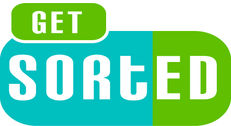SORTED Guide to Sustainability in Further Education – Part 3 - Teaching, learning and curriculum – 3.4 Getting Started
The recommendations below ensure that:
- the learner gets the most value, in terms of developing their understanding of sustainability, acquiring sustainability competences, and being able to make present and future choices based on this understanding and skills acquired;
- there is an institutional approach to embedding sustainability, which will have a greater opportunity of success.
Senior level commitment and strategy
Senior level commitment to embedding sustainability into teaching, learning and curriculum is essential. This is necessary to ensure that it is a recognised priority within the organisation, which will then ensure that the necessary resources are allocated to facilitate the process. For the same reason, ESD needs to be included in the strategic plans with key performance indicators identified.
Staff CPD
Ensure staff have a common understanding of what sustainability is. How many staff believe it is just about climate change and recycling? Do not assume that everyone has a full understanding of the breadth of sustainability, and how it is relevant to their curriculum area. Not educating staff, and assisting them with understanding how it is relevant to their subject area is a huge barrier to embedding ESD.
Ten steps for teaching staff to get started
Here’s a ten step summary to embedding sustainability into your curriculum area adapted from the Embedding Sustainability in the Curriculum Guide.
- Read and familiarise yourself with the definitions of ESD referred to earlier in this document.
- Consider the content of what you teach as well as how you teach it. Where does it lend itself to environmental or social considerations?
- Identify current resources available to you and start filling in gaps. Familiarise yourself with the resources on the Sustainability Exchange website.
- Research vocationally specific resources via relevant professional bodies and sector skills councils, also see examples of what other FE providers have been doing:
- Look in:
- Blackpool and The Fylde ESD Document Repository
- Examples gathered in LSIS Embedding Sustainability into Teaching, Learning and the Curriculum in the learning and skills sector, Section
- Examples in Embedding Sustainability in the Curriculum Guide
- Identify the environmental, ethical and social considerations you can raise as part of the course.
- Identify the generic skills relating to sustainable development that can be developed or reinforced – see links to PLTS framework below.
- Have the conviction to get started, sharing expertise and working together means that you do not need to be experts.
- Use your learners as a resource.
- Make some changes!
- Share your examples with others, talk to colleagues and add your examples to the Sustainability Exchange website.
The Personal, Learning and Thinking Skills (PLTS) framework is a group of six skills originally identified by the Qualifications and Curriculum Authority (QCA) as skills that, together with the functional skills of English, mathematics and ICT, are essential to success in learning, life and work. The six PLTS are:
- Independent enquiry
- Creative thinking
- Reflective learning
- Teamwork
- Effective participation
- Self-management.
These are a basis to any sustainability education, and yet are also recognised as key skills for students. Educating for Sustainability, done well, will enhance both the short-term objectives (grades and employability) for students along with long-term goals (greater skills for enhancing life and career progression and contribution to creating a sustainable society).





 Except where otherwise stated, content on this site is
licensed under a Creative Commons Attribution 3.0 License.
Except where otherwise stated, content on this site is
licensed under a Creative Commons Attribution 3.0 License.
